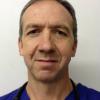New guidance from NICE points out that thousands of people with the heart condition atrial fibrillation (AF), which causes irregular or abnormally fast heart rates, could be saved from strokes, disability or death by being offered the right treatments.
Atrial fibrillation occurs when abnormal electrical signals are emitted from the top chambers of the heart (the atria). The chambers contract randomly and override the heart's natural pacemaker. The condition affects around 800,000 people in the UK; but it is thought that around a further 250,000 may be undiagnosed. Symptoms can include heart palpitations, dizziness, shortness of breath and fatigue.
Dr Oliver Segal, Consultant Cardiologist explains: “When the upper chambers of the heart are beating much faster than normal blood can stagnate within them and this can lead to clot formation in the heart, particularly in an area called the left atrial appendage. When clots form here they can dislodge and travel through the heart and circulate to the brain, causing a stroke.”
Professor Mark Baker, Director of Clinical Practice at NICE says: “We know that AF increases the risk of strokes by up to five times. It's estimated that the condition causes around 12,500 strokes each year.”
“We also know that that around 7,000 strokes and 2,000 premature deaths could be avoided every year through effective detection and protection with anticoagulant drugs that prevent blood clots from forming. Unfortunately only half of those people, who should be getting these drugs, are. This needs to change if we are to reduce the numbers of people with AF who die needlessly or suffer life-changing disability as a result of avoidable strokes.”
Until recently the only anticoagulant available to people with AF who were assessed as being at increased risk of stroke was warfarin. Although cheap and effective, warfarin has drawbacks that can make taking it problematic for some people. For example, many foods can interfere with or alter the effects of warfarin, such as green leafy vegetables, as well as alcohol and many medicines.
Also, regular monitoring and dose adjustments to ensure that the drug is working properly can adversely affect work, social and family life. For example, attending anticoagulant clinics may be particularly difficult for some elderly patients who are housebound or have mobility problems.
Since 2012 a number of drugs belonging to a new generation of oral anticoagulants have been approved by NICE. Known as novel oral anticoagulants (or NOACs), they do not require such regular monitoring and dose adjustments and so represent an attractive option for some people with AF. However, there is evidence that these drugs are not being as widely prescribed as they could be even though they are potential lifesavers.
Professor Neal Maskrey, Consultant Clinical Adviser, Medicines and Prescribing Centre, NICE, said: “Alongside the publication of the NICE guideline there are two novel approaches to support the implementation of the new evidence about stroke prevention for people with AF. The NICE Implementation Collaborative has summarised key aspects of the new guidance around the use of the new generation of oral anticoagulants and recommends ways in which local practices can be adapted to deliver high quality treatment for people with AF.”
The guideline makes a strong recommendation that aspirin should not be offered to people with AF solely on account of increased risk of stroke. It used to be thought that aspirin is much safer in the older population because of the increased risk in this patient group of both bleeding and haemorrhagic stroke associated with anticoagulants. However, new evidence shows that aspirin is not as effective as anticoagulants at preventing stroke in people with AF who are at increased risk of stroke, and is also not as safe in terms of causing bleeding. Although the risks of anticoagulation also increase with age, the evidence also shows that its benefits outweigh the risks in the vast majority of people with AF.
In addition, NICE has worked with AF experts and patients to produce its first pilot Patient Decision Aid(PDA). This is designed to help patients weigh up the possible benefits, harms, advantages and disadvantages of the different options for treatment so that they can better discuss them with a health professional and come to a decision together. The PDA includes a tool for patients to rate what is and isn't important to them in stroke prevention. It also has visual representations of the risks and benefits of the treatments to prevent stroke.The guideline also addresses the best ways to slow a person's heart rate or restore or maintain the normal heart rhythm if their symptoms of AF continue once their heart rate has been controlled or if a heart rate-control strategy has not worked.







